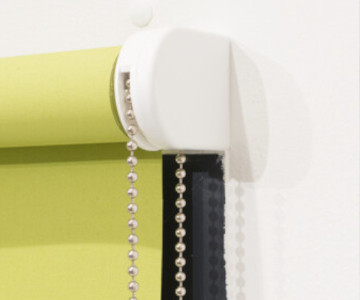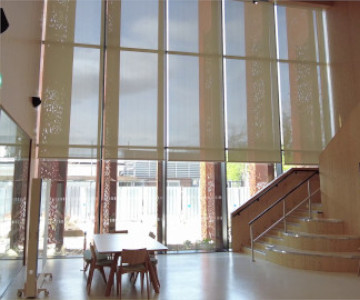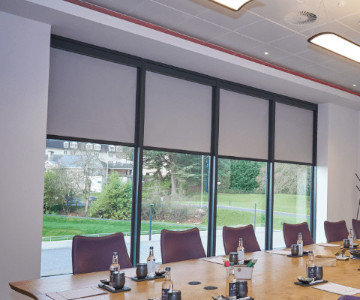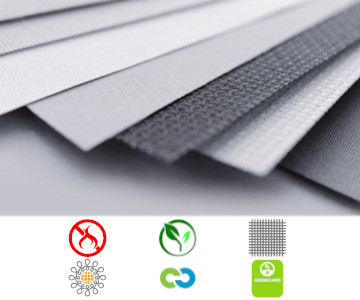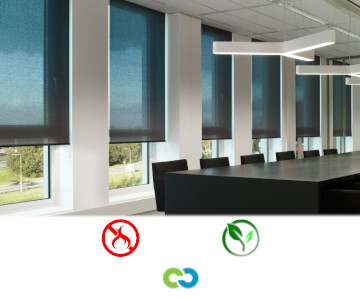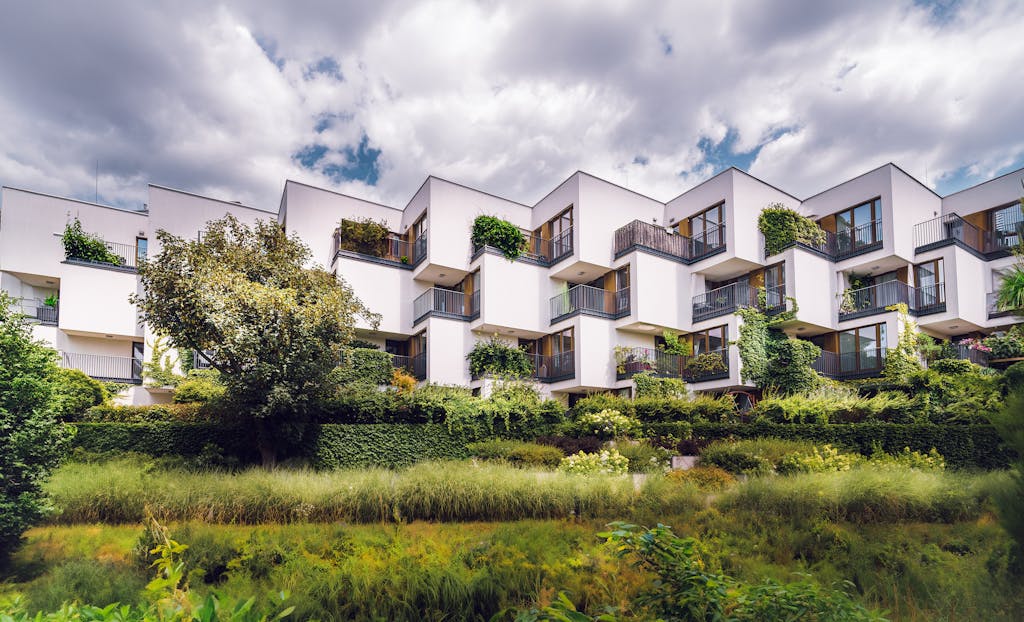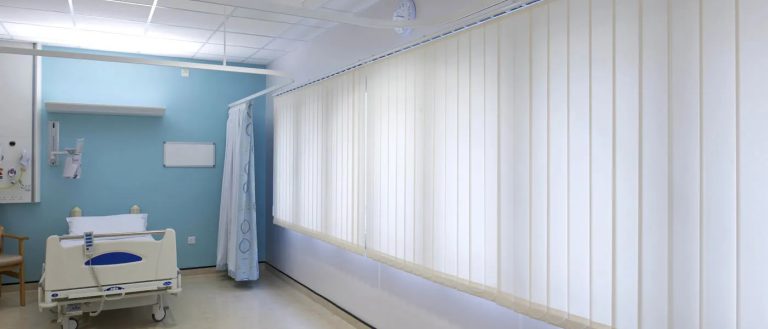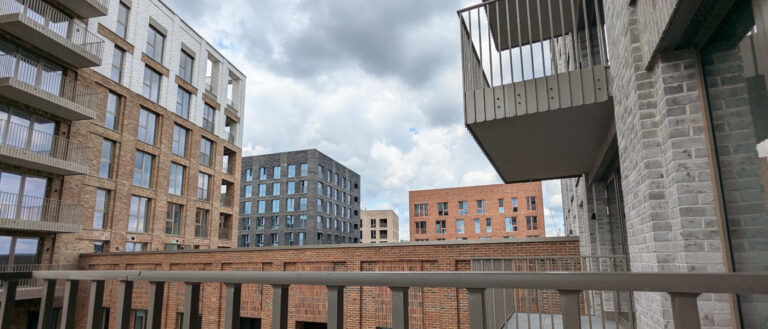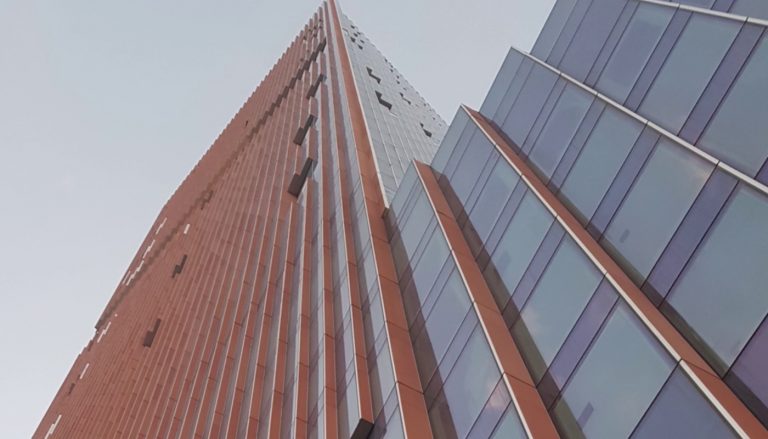Safety Laws and Regulations when Choosing Blinds and Fabrics
When selecting blinds and fabrics, ensuring safety is more than just a legal obligation—it’s about creating secure environments for homes and businesses alike.
Whether you’re outfitting a cosy living room or a bustling office, adhering to the latest safety regulations can prevent serious accidents, particularly for children.
With updated legislation like the EN 13120 standard, which focuses on child safety in window coverings, these rules apply to both residential and commercial settings.
Ensuring compliance not only protects your family or staff but can also save you from costly legal repercussions.
Here at Enviroscreen, we’re committed to guiding you through these regulations.
Whether it’s providing advice on compliant installations or retrofitting existing blinds with safety devices like chain tidies, we ensure every solution is up to code.
Our alternative operating methods even eliminate the risk entirely, helping you comply with the most stringent safety standards.
Corded vs. Cordless Blinds: Safety Considerations
When choosing between corded and cordless blinds, safety should be a top priority, especially in homes with young children or pets.
Here’s a quick comparison:
- Corded Blinds: These blinds, though widely used, pose a strangulation risk. Regulations require safety devices like cord cleats, but they still come with inherent dangers.
- Cordless Blinds: Cordless options are much safer, as they completely eliminate the risk of entanglement. These systems are ideal for families and are now considered the safest standard.
Why Cordless is Better for Child and Pet Safety:
Cordless blinds not only reduce the chances of accidents but also offer a sleek, modern appearance with easier operation.
For any environment with children or pets, cordless is the way to go.
Understanding UK Safety Standards for Blinds
When it comes to window blinds, compliance with UK safety standards is non-negotiable.
Whether you’re a manufacturer, installer, or homeowner, understanding and adhering to these standards can prevent accidents and protect occupants.
BS EN 13120 Standards Explained
The BS EN 13120 standard is a critical regulation aimed at ensuring the safety of internal window blinds, particularly those with cords.
This standard covers:
Child Safety Features:
- Mandatory safety devices for corded blinds (e.g., cord cleats, tensioning systems).
- Limits on cord lengths based on window height.
Installation Requirements:
- Safety devices must be installed in any location where children under 42 months are present.
- Clear instructions for installation and usage must be provided.
Testing and Compliance:
- Blinds must undergo safety tests, including cord durability and tension.
- Manufacturers must ensure blinds are labelled with compliance markers.
| Feature | Requirement |
|---|---|
| Cord Safety Devices | Must be installed in homes with children under 42 months |
| Cord Length | Restricted based on window height |
| Labelling & Instructions | Clear safety and installation instructions are required |
| Testing | Blinds must pass durability and tension tests |
Why Compliance Matters:
For manufacturers, compliance isn’t just a regulatory obligation—failing to meet these standards can lead to hefty fines and product recalls.
For consumers, it’s about ensuring the blinds you choose for your home or business are safe and reliable.
Role of Trading Standards in Blind Safety
In the UK, Trading Standards play a vital role in ensuring blinds meet safety regulations. They are responsible for:
- Enforcement: Inspecting products for compliance with standards like BS EN 13120.
- Investigations: Responding to complaints about unsafe products and ensuring corrective actions.
- Penalties: Issuing fines and requiring recalls for products that do not meet safety criteria.
If you purchase a blind that doesn’t comply, you can report it to Trading Standards, who will investigate and take appropriate action.
Recent Legislative Updates and Their Impact
Since 2014, several legislative updates have been introduced to improve the safety of blinds, specifically addressing:
- Corded Blinds: New laws require that all blinds come equipped with safety devices to reduce the risk of strangulation for young children.
- Mandatory Safety Devices: As of the updated standards, all blinds sold or installed must include devices such as cord cleats or chain tensioners.
- Fines for Non-Compliance: Manufacturers and installers face increased penalties for failing to adhere to these updated regulations.
These changes have made the installation of child-safe blinds a legal requirement across residential and commercial properties.
Do the Regulations Apply to Rental Properties?
Yes, landlords are responsible for ensuring that all window blinds in rental properties comply with safety regulations, particularly where young children may be present.
This means:
Landlords’ Responsibilities:
- Must provide blinds with compliant safety features.
- Responsible for maintaining and retrofitting blinds to meet the required safety standards.
Tenants’ Rights:
- Tenants can request safety upgrades if the blinds do not meet the required standards.
- Non-compliance can be reported to local authorities.
Child Safety Regulations for Blinds and Fabrics
The 2014 regulations were introduced to address the safety risks posed by corded blinds, especially to young children. These regulations require:
- Mandatory Safety Devices: All new blinds must include child-safety devices such as cleats or tensioners.
- Cord Length Restrictions: Cords must be kept at a safe length based on window height to avoid strangulation hazards.
- Clear Instructions: Manufacturers must provide installation guidelines and warnings about potential dangers.
Impact on Manufacturers and Consumers:
For manufacturers, this means strict compliance in design and testing.
Consumers benefit from safer products but must still be vigilant, especially when retrofitting older blinds.
Implementing Child Safety Devices
There are several types of safety devices now required by law for blinds in homes or businesses where children may be present. These include:
- Cord Cleats: Used to wrap excess cord and keep it out of reach.
- Breakaway Systems: Automatically detach cords under pressure, preventing entanglement.
- Wand Controls: Cordless options that entirely eliminate the risk.
Installation Best Practices:
- Position cleats at least 1.5 metres from the ground.
- Ensure that any breakaway device is correctly fitted and functional.
- Consider cordless blinds in homes with young children for maximum safety.

Retrofitting Existing Blinds for Safety Compliance
If you have older blinds, they can still be made compliant with today’s safety standards.
Here’s how:
- Assess the Blind Type: Identify if the blind has cords or chains that could pose a risk.
- Install Safety Devices: Add cleats or tensioners to keep cords out of reach.
- Shorten or Secure Cords: Ensure cords are properly shortened or tethered.
Fire Safety Compliance for Blinds and Fabrics
Using fire-retardant fabrics is not just about meeting regulations—it can be the difference between life and death in an emergency.
Fire-retardant materials help prevent the spread of flames and are required in certain settings like public buildings and commercial spaces.
Key Points:
- UK Fire Safety Regulations: Fabrics used in public and commercial spaces must meet fire safety standards, such as being flame-resistant.
- Benefits for Homes: Even in residential settings, opting for flame-retardant blinds can enhance safety.
Certification and Testing Standards
Blinds and fabrics need to comply with BS 5867, a British Standard for fire safety in textiles. Here’s how you can ensure compliance:
- Look for Certification Labels: Blinds that meet the BS 5867 standard will have clear certification marks.
- Test Reports: Ask manufacturers for fire safety test reports if you’re unsure.
- Verify with Authorities: Ensure the supplier is reputable and complies with UK fire safety laws.
Why It Matters:
Fire-resistant blinds are especially important in public buildings such as hospitals, schools, and office spaces.
The right certifications guarantee that the materials will perform as expected under fire conditions, providing an additional layer of protection.
Selecting Safe Materials for Blinds
Choosing blinds made from eco-friendly and non-toxic materials has benefits beyond safety—it also reduces your environmental footprint.
Materials like PVC-free and plant-based fabrics not only meet safety standards but also help you create a healthier living or working environment.
Key benefits include:
- Reduced Emissions: Non-toxic blinds contribute less to indoor air pollution.
- Healthier Spaces: Safer for homes, especially for those with children or allergy sufferers.
Eco-Friendly Options:
- Recycled PET Blinds: Made from recycled plastic bottles, these blinds reduce waste and are sustainable.
- Cradle-to-Cradle Certified Fabrics: These fabrics are produced in an environmentally responsible manner, from raw materials to end-of-life disposal.
By choosing sustainable fabrics, you can contribute to BREEAM requirements for green building certifications, making them perfect for eco-conscious homeowners and businesses.
Material Durability and Safety
When it comes to long-term safety, the durability of blind materials plays a crucial role.
Durable materials reduce the need for frequent replacements and ensure your blinds continue to perform safely over time.
Solar Protective Fabrics
Solar fabrics not only improve energy efficiency but also protect from harmful UV rays.
By reflecting sunlight, these fabrics help reduce heat gain, keeping buildings cooler and lowering energy costs.
Benefits:
- Reduces the need for air conditioning.
- Protects furniture and flooring from fading due to UV exposure.
Look for blinds with a high UPF rating to ensure maximum protection from harmful rays.
These fabrics are especially useful in large office buildings and residential developments where heat gain can be a major concern.
Selecting the right solar protective fabric is essential for ensuring both safety and energy efficiency.
Make sure to check for certifications such as BS EN 13758, which governs sun-protective fabrics in buildings.
Antimicrobial Coatings for Blinds
In settings where hygiene is critical, such as hospitals, schools, and kitchens, blinds with antimicrobial coatings can play a vital role in maintaining cleanliness.
These coatings help prevent the growth of harmful bacteria and reduce odours, making them essential in environments where infection control is a priority.
Antimicrobial Features:
- Kills up to 99.9% of bacteria, including E. coli and MRSA.
- Remains effective even after frequent cleaning.
By installing blinds with antimicrobial properties, you can improve hygiene, aesthetics, and durability all at once.
Whether it’s in a nursery or a dental clinic, these coatings offer an extra layer of protection that is both practical and efficient.
Commercial Blinds: Regulations and Best Practices
Commercial or public sector spaces like offices, schools and hospitals have stringent safety requirements for window coverings.
Blinds in these environments must comply with strict standards, including:
- Child Safety: Schools and childcare facilities must use blinds with appropriate safety devices, such as cordless systems or secured cords.
- Fire Retardant Fabrics: In hospitals and offices, fire-retardant materials are essential to meet safety regulations.
Compliance Strategies:
- Conduct regular safety audits.
- Ensure all blinds meet BS EN 13120 safety standards.
- Work with certified installers to ensure compliance.
Selecting Blinds for High-Traffic Areas
For high-traffic commercial environments, durability is key. The materials used must withstand frequent use while maintaining safety standards.
Best Material Choices:
- Vinyl or Polyester: These materials offer high durability and resistance to wear.
- Metal Blinds: Ideal for long-lasting performance and easy maintenance.
Design Considerations:
- Opt for automated or motorized blinds to reduce manual handling.
- Choose materials that are easy to clean and maintain in busy areas.
Energy Efficiency and Safety in Commercial Blinds
In large commercial buildings, balancing energy efficiency with safety is critical. Blinds with energy-saving features, such as solar protective fabrics, help reduce heating and cooling costs.
Energy-Efficient Features:
- High Reflectivity: Blinds that reflect sunlight can lower cooling costs.
- Insulating Properties: Insulating blinds reduce heat loss in colder months.
Certifications:
- Look for BS EN 13758 for solar fabrics and BREEAM standards to ensure energy-efficient and safe window coverings.
International Maritime Organization (IMO) Certification
For UK-based marine industries, including cruise ships and commercial yachts, compliance with IMO Certification is crucial for fire safety.
This certification is based on the International Code for Fire Safety Systems (FSS Code), specifically the IMO 2010 FTP Code Annex 1 Part 7, which tests the flammability of vertically supported textiles like blinds.
Fabrics that meet these standards are designed to prevent the rapid spread of fire, a vital feature in maritime environments where escape routes are limited.
While intended for marine vessels, IMO-certified blinds are also a wise choice for personal yachts, offering an additional layer of safety.

Best Practices for Safe Blind Installation
Professional vs. DIY Installation
When it comes to installing blinds, the choice between professional installation and a DIY approach can impact both safety and the longevity of your window coverings.
Professional Installation Benefits:
- Expert Knowledge: Professionals, like the team here at Enviroscreen, understand the nuances of safety standards and can recommend the best fabrics, control systems and shading solutions tailored to your specific needs.
- Guaranteed Compliance: They ensure that your blinds meet all safety regulations, avoiding any costly mistakes.
- Turn-Key Solutions: From supply to aftercare, professionals handle everything, offering peace of mind.
DIY: While DIY can be tempting to save costs, it carries risks, especially when installing safety devices or ensuring compliance with child safety laws.
Always make sure to follow safety guidelines meticulously if you choose this route.
Regular Maintenance and Safety Checks
Regular maintenance is essential to keep your blinds safe and functional.
Over time, cords, mechanisms and fabrics can wear out or become non-compliant with updated safety regulations.
Safety Checklist:
- Inspect Cords and Mechanisms: Check for wear or fraying that could pose a risk.
- Test Child-Safety Devices: Ensure cleats and tensioners are securely in place.
- Clean and Maintain Fabrics: Regularly clean blinds to prevent dirt build-up that could impair functionality.
Routine inspections help maintain safety and ensure your blinds continue to meet current standards.
Conclusion: Ensuring Safety and Compliance in Your Blind Choices
When choosing blinds, adhering to safety regulations is essential for both residential and commercial settings.
From child-safe features to fire-retardant materials, compliance with the latest standards ensures a safer environment for everyone.
Key Takeaways:
- Follow laws like BS EN 13120 and child safety regulations.
- Prioritise fire-retardant and durable materials.
- Regularly inspect blinds for ongoing compliance.
Assess your current blinds for compliance today.
For professional guidance, contact Enviroscreen for expert advice and a free, no-obligation quote.
Frequently Asked Questions (FAQs) About Blinds and Safety
How Can I Ensure My Blinds Are Safe for Children?
Look for cordless blinds or those with safety devices like cord cleats or breakaway systems. Always install safety devices at least 1.5 meters above the ground to keep cords out of reach.
Recommendation: Cordless blinds are the safest option for homes with young children.
What Are the Legal Requirements for Blinds in Public Buildings?
Public buildings must comply with specific safety standards, including child-safety regulations and fire-retardant materials. Always ensure that blinds meet the BS EN 13120 and fire safety certifications like BS 5867.
Tip: Work with certified installers to meet safety laws for public spaces.
How Do I Retrofit My Existing Blinds for Safety?
You can retrofit old blinds by installing cord cleats or tension devices. For a more permanent solution, consider replacing them with cordless blinds or adding breakaway systems to existing cords.
Affordable Solutions:
- Purchase safety kits for DIY retrofitting.
- Consider professional retrofitting for complex installations.
What Should I Do If My Blinds Don’t Comply with Safety Standards?
If your blinds don’t meet safety standards, immediate action is required. Retrofit them with child-safety devices or replace them with compliant options. Non-compliance can lead to legal consequences, especially in commercial spaces.
Next Steps:
- Retrofit or replace non-compliant blinds.
- Contact professional installers like Enviroscreen to ensure full compliance with safety laws.
For enquiries about blind regulations:
Enviroscreen Systems
Swift House,
13 Ronsons Way,
St Albans,
AL4 9QT
United Kingdom
Telephone: 01727 220 007
E-mail: info@enviroscreen.org.uk


